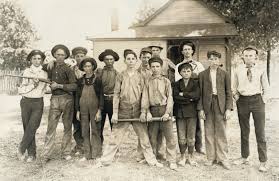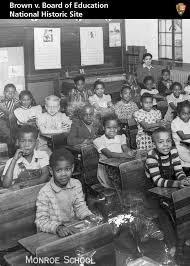History of Education in America
The very school in the first British North Atlantic
states opened in the seventeenth century and were to plan young men to peruse
the Bible. The Boston Latin School was established in 1635. The main expense
upheld government funded school was in Dedham, Massachusetts. In the 1640s the
Massachusetts Bay Colony made fundamental training necessary and comparative
statutes were embraced in different provinces.(more about History of Education in America) is given below
Initially schools were just for
young men and guideline was through repetition retention. Textbooks were at
first brought from England, however in 1690, Boston printers were republishing
the English Protestant Tutor as their own The New England Primer. In eighteenth
century basic schools, which were for the most part financed by a blend of
neighborhood distributions and expenses charged to families who had kids going
to the school. All understudies were instructed in a solitary room by one
educator. Anything past a fundamental proficiency and numeracy required
participation at a private institute. Boston at long last began the primary
open secondary school in the United States in 1821.
New Netherland as of now had grade schools in many towns
when the state was assumed control by the British in 1664. These schools were
associated with the Dutch Reformed Church. They stressed religious guideline
and petition; direction was in Dutch. The new British leaders of the province
shut the Dutch schools and did not supplant them. German pilgrims in New York,
New Jersey, Pennsylvania, and Maryland likewise supported primary schools
firmly associated with their houses of worship.
The Sisters of the Order of Saint Ursula established the
principal North American school for young ladies in French New Orleans in 1727.
By the 1740s high society ladies likewise got some formal training in
Philadelphia. Charge upheld instruction for young ladies began as right on time
as 1767 in New England; however training for young ladies stayed discretionary
and was not offered in numerous towns.
Subjugation and Race
While it was unlawful to educate oppressed Africans to
peruse and write in the South amid the pioneer period and after autonomy, in
the North religious direction and essential proficiency were now and again
supported. In New York, the Church of England and the Society for the
Propagation of the Gospel in Foreign Parts endeavored to change over the
oppressed African populace to Christianity. The principal Anglican school for
New York's Black populace opened in 1703. In 1711 Governor Robert Hunter issued
a Proclamation requesting slaveholders to allow subjugated Africans to go to
religious guideline.
The Constitution of the United States does not say
instruction as a particular duty of the national government. Accordingly, under
the tenth amendment it remains a range of obligation held to the states. Most
states generally doled out direct duty over instruction to areas. In
Philadelphia and different urban areas beginning in the 1820s workingmen's
associations crusaded for state funded instruction that would lift the
financial state of their individuals.
For a lot of its history, instruction in the United States
was isolated by race, first in the North and after the Civil War when Blacks
were allowed to go to class, in the South. An early racially incorporated
school, Noyes Academy in Canaan, New Hampshire, was obliterated by nearby
Whites in 1835 and in the long run revived as an all-White school. In 1848, the
girl of Frederick Douglass, the main Black abolitionist in the United States,
passed selection tests and was admitted to the prestigious Seward Seminary in
Rochester, New York, in any case she was kept isolated from the White understudies
and in the long run pulled back from the school.
In the American South bondage meddled with the improvement
of state funded instruction for all kids. For the most part the grower class
contracted guides to teach their youngsters or sent them to tuition based
schools, at times in the North and in some cases in Europe. It was not until
post-Civil War Reconstruction when the Freedmen's Bureau opened 1,000 schools
serving 90,000 previous slaves and their youngsters that government funded
instruction extended in the South and it has remained underfunded right up 'til
today.
Instructors/Mentors
In the nineteenth century instructing was essentially a
transitory employment, for ladies until they wedded, or for men until they
entered a calling or discovered other work. Instructors had restricted
trainings and there were no formal qualifications. This began to change in 1823
with the making of two-year ordinary or showing schools, yet in many parts of
the United States educating did not require a four-year professional education
until after World War II. Notwithstanding these and different issues, by 1870,
all states had free grade schools and the U.S. populace had one of the most
elevated education rates on the planet.
Horace Mann in Massachusetts was a noteworthy nineteenth
century defender for instructive change. As Secretary of Education Mann
championed a statewide framework for planning proficient educators and
necessary school participation laws. By 1900, 34 states had obligatory school
participation laws, yet just four Southern states. Thirty states required
school participation until at any rate age 14 and by 1910 seventy five percent
of American youngsters went to class. By 1918, each state obliged understudies
to finish primary school. However instructive open door was not equivalent the
nation over. In 1912 the Southern states with 34% of the United States populace
allotted just three percent of the instruction financing.
Workers/personnel
Likely under five percent of American adolescents went to
open secondary school in the prompt post-Civil War period. However from 1880 to
1924 there was hazardous development in optional training that paralleled the
entry of new Southern and Eastern European foreigners. Around 200,000
understudies went to secondary schools in 1890 and very nearly 2,000,000 by
1920, an expansion from 7% of the 14 to 17 year old populace to more than 30%.
Amid the 1890 to 1924 period there was progressively sharp clash over the
motivation behind secondary school. In 1893 the Committee of Ten, a board
contained driving college instructors, recommended that open secondary schools
accentuate human sciences training. Amid World War I, as the nation thought
about how to Americanize a large number of youngsters with roots in nations at
war with the United States, the National Educational Association's Commission
on the Reorganization of Secondary Education, issued a call for more
differentiated instruction including professional and business tracts.

Professional offerings really had begun to extend around
1910. By 1920 most urban secondary schools offered four secondary school
tracks: school preliminary, business (which for the most part arranged young
ladies, for office work), professional (modern expressions for guys and home
financial aspects for females), and general (which offered a confirmation with
no preparation or certifications). In 1910 around 9% of Americans had a
secondary school confirmation. This expanded to 40% by 1935 and half by 1940,
despite the fact that the quickness of the expansion is deluding. Numerous
young fellows and ladies remained in school amid the Great Depression on the
grounds that there was no work. Amid the twentieth century the rate of
adolescents who moved on from secondary school expanded from around six percent
to around 85%.
African Americans
Booker T. Washington was a main African American instructive
figure in the United States toward the finish of the nineteenth and begin of
the twentieth century. Washington acknowledged racial isolation and contended
Black change would come through horticultural and professional training.
Washington, be that as it may, did not expect a changing twentieth century
economy with new work requests. His primary resistance inside the Black people
group originated from W.E.B. DuBois who tested Jim Crow and proposed enhancing
conditions for the Black masses by putting resources into the training of the
Black first class, the gifted tenth. De Jureor lawful isolation was maintained
by the United States Supreme Court in the 1896 Plessy v. Ferguson choice. Since
African Americans to a great extent lived in the South where there were couple
of African-American optional schools. Thus Blacks trailed behind whatever is
left of the country as secondary school instruction extended in the primary
portion of the twentieth century. What's more, in the greater part of the North
private isolation and financial obstructions delivered accepted racially
isolated schools.

No comments:
Post a Comment